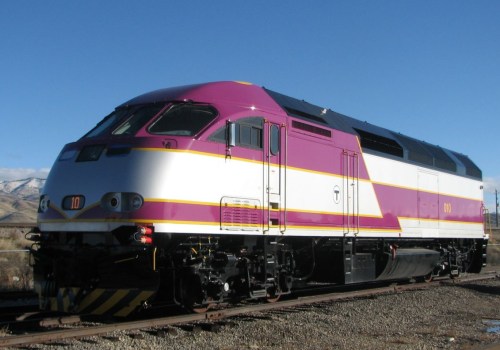With the growing popularity of cycling, bike share programs are becoming a popular way to get around cities. More and more cities are embracing bike share programs as a convenient and affordable way for people to get around. Whether you're looking for a leisurely ride or need to get somewhere quickly, bike share programs offer a great option for getting around. But what exactly are city bike share programs? In this article, we'll explore everything you need to know about city bike share programs, from how they work to the benefits they offer. We'll also look at how cities are utilizing bike share programs to make their cities more livable and sustainable.
So if you've ever wondered what city bike share programs have to offer, keep reading!City bike share programs are becoming increasingly popular throughout the world. From Europe to North America, cities are offering bike-sharing schemes that make it easy for commuters and recreational riders alike to get around quickly and conveniently. In this article, we'll explore the basics of city bike share programs and discuss how they can benefit both individual riders and cities. The first thing to understand about city bike share programs is that they are typically organized by the local government or transit authorities. This means that riders can expect uniform standards of safety and service throughout the program.
In many cases, bike-sharing programs are subsidized by the city, making them an affordable option for everyday commuters. Most bike share programs consist of a fleet of bicycles that can be checked out from designated stations located throughout the city. Riders can choose from a variety of plans, ranging from short-term rentals to monthly or annual subscriptions. Payment is usually done using a credit or debit card.
Once the bike is checked out, riders have access to it for a set amount of time before returning it to any bike share station in the city. One of the biggest advantages of city bike share programs is that they provide an affordable and convenient way to get around town. In addition to being environmentally friendly, riding a bike is also a great way to exercise and stay healthy. Additionally, many cities are now investing in “smart” bike share systems that use GPS technology to track each bike’s location and provide riders with real-time updates on when and where bikes are available. For cities, investing in a bike share program can provide numerous benefits. Not only do these programs help reduce traffic congestion and carbon emissions, but they also help promote economic development by encouraging people to visit local businesses.
Additionally, studies have shown that bike share programs can actually increase property values in neighborhoods where they are implemented. Finally, it’s important to note that most city bike share programs require riders to wear helmets for safety reasons. Additionally, many cities have specific laws regarding where bikes can be ridden and how they should be parked when not in use. It’s important for riders to be aware of these rules and regulations before using a bike share program.
What Are the Benefits of City Bike Share Programs?
City bike share programs offer numerous benefits for both riders and cities alike. For riders, these programs provide an affordable way to get around town while also helping promote health and fitness.For cities, these programs can reduce traffic congestion, promote economic development, and even increase property values. For riders, city bike share programs can provide a convenient and cost-effective alternative to public transportation or owning a car. Depending on the program, riders can purchase annual memberships or pay per ride. This allows riders to save money by avoiding costly parking fees or parking tickets.
Additionally, city bike share programs can help encourage physical activity and reduce air pollution. Cities also benefit from city bike share programs. By providing an accessible public transportation option, cities can reduce the number of cars on the road, leading to decreased traffic congestion and improved air quality. Additionally, bike-share programs help spur economic development by encouraging more foot traffic in local businesses.
Finally, city bike share programs can even increase property values in certain areas. City bike share programs offer numerous benefits for both riders and cities alike. For riders, these programs provide an affordable way to get around town while also helping promote health and fitness. For cities, these programs can reduce traffic congestion, promote economic development, and even increase property values. With their numerous advantages and increasing popularity, city bike share programs are becoming an increasingly important part of urban transportation. The success of city bike share programs relies on the commitment of governments, businesses, and citizens in order to ensure that the programs are properly managed and maintained.
Additionally, these programs must be tailored to the specific needs and goals of their respective cities in order to maximize their potential benefits. By taking the time to understand the nuances of each city bike share program, cities can create a powerful tool for improving urban mobility.











Leave Message